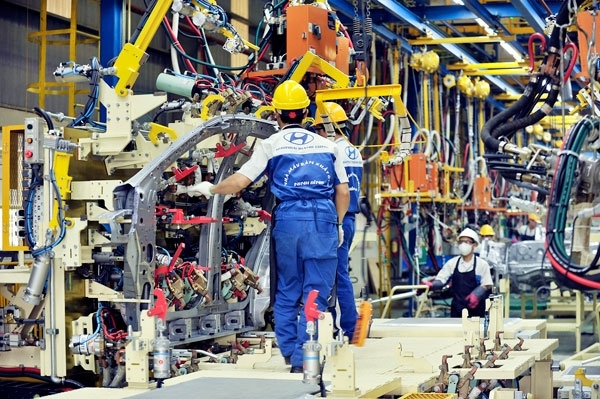Less than 100 Vietnamese businesses are “capable enough" to provide auto accessories
According to the Ministry of Industry and Trade, in order to improve the level and capacity of industrial enterprises in general as well as supporting enterprises in particular, Vietnam needs to spend a similar amount of resources as Korea with a support budget of up to hundreds of millions of dollars.
 |
|
Illustrative photo. |
In recent years, supporting enterprises for Vietnam's automobile industry have developed slowly in both quantity and quality compared to many others in the region. Currently, only a few domestic suppliers can participate in the supply chain of automobile manufacturers and assemblers in Vietnam.
Compared to Thailand, the number of Vietnamese suppliers in the auto industry is still very limit ed. Thailand has nearly 700 tier 1 suppliers, but Vietnam has less than 100. Thailand has about 1,700 tier 2 and 3 suppliers, while this number is less than 150 in Vietnam.
The Ministry of Industry and Trade said that auto parts and components currently produced in Vietnam are mainly labor-intensive parts with simple technology such as seats, glasses, tires, and wheels.
Vietnam has to be a net importer of almost all groups of supporting industry products with high technology content and added value, especially important parts and components, belonging to brake, clutch, gearbox, and steering systems which require high manufacturing technology.
The level of industrial enterprises supporting the automobile industry is not qualified enough to meet the requirements of production chains.
To improve the level and capacity of enterprises, the State needs to allocate large enough resources to support them.
“From Korea's development experience with hundreds of millions of dollars in support for industry and supporting industries in comparison with the very limit ed capacity of industrial enterprises as well as supporting industry enterprises, especially small and medium-sized ones, Vietnam needs to spend a similar amount of resources,” said the representative of the Ministry of Industry and Trade.
According to the Ministry of Industry and Trade, Vietnam needs to consider six following aspects.
First, it is necessary to allocate capital to build material foundations to form at least three centers to support the development of supporting industries in three regions that are prioritized for these supporting industries.
These three centers act as shared technical centers and machines, providing testing, measurement, inspection, product quality certification, consulting and technology transfer services to supporting industry enterprises, including industrial enterprises supporting the automotive industry and business improvement services.
Second, it is necessary to allocate enough non-business funds to implement the Supporting Industry Development Program approved in Decision No. 68/QD-TTg dated January 18, 2018 of the Prime Minister to effectively implement the supporting program for domestic supporting industry enterprises.
Third, enhance the role and encourage localities in formulating their own policies and programs for the development of supporting industries, especially those which support the automobile industry; invest resources in the locality on the basis of the provisions of the law and ensure suitability with the local socio-economic conditions.
Fourth, develop preferential credit packages for the development of priority industries, including supporting industries for the automobile industry and attracting more investment to develop supporting industries up to 2025.
Fifth, attract investment from manufacturers of finished products and suppliers of major assemblies and components in the automotive industry in the world, especially multinational enterprises investing in Vietnam to serve the domestic market and the ASEAN market rather than export-oriented goals and the global market.
Sixth, it is necessary to promote large projects in the material industry, especially projects to produce hot rolled steel, fabricated steel of domestic investors to ensure the material input to support the automobile industry; attracting investment in basic manufacturing sub-sectors (forming billet, pressure machining, precision machining, heat treatment, surface treatment and mold manufacturing.
|
According to the Ministry of Industry and Trade, the localization rate for personal cars up to 9 seats is still low. The set target is 30-40% in 2020, 40-45% in 2025 and 50-55% in 2030, but so far, this amount has only accounted for 7-10% on average. In which, Thaco reached 15-18%, Toyota Vietnam reached 37% for Innova cars alone (according to information from the business). This number is much lower than the set target as well as much lower than other countries in the region such as Thailand, Indonesia and Malaysia. |










